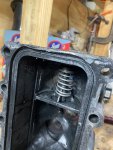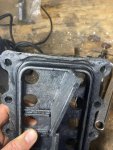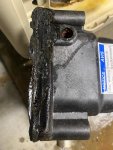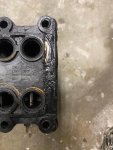Does anybody have a manifold that leaks after it heats up? I replaced one which was grossly deformed from heat exposure. Ran it for a few days thereafter without heating the water--no leaks. Started the heater and . . . leak.
The heater is located indoors.
The heater is located indoors.





